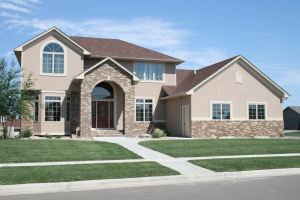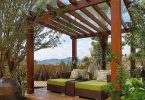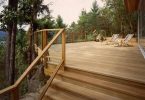 If you are like most others, you put a significant amount of time, physical energy and money into making your landscaping vision become a reality. Everything is well-thought out as far as soil, sunlight and companion plants go and of course, you have made sure that it’s aesthetically-pleasing to turn a few heads in the neighborhood.
If you are like most others, you put a significant amount of time, physical energy and money into making your landscaping vision become a reality. Everything is well-thought out as far as soil, sunlight and companion plants go and of course, you have made sure that it’s aesthetically-pleasing to turn a few heads in the neighborhood.
Well, did you know that if you put that same amount of thought into an energy-saving vision, you can create the ideal landscaping layout that will actually reduce your energy costs? There are little tricks like using hedges to block winter wind or planting a large tree in the right spot to shade the hottest side of your house in the summer that will go a long way in saving you money.
Are Trees Really that Effective?
Some people hear this and can’t believe a simple step like planting a tree can make such a huge difference but it certainly can. In fact, according to the U.S. Department of Energy, trees that are strategically placed around your home can reduce your annual consumption of energy by as much as 25 percent. Even if you have to invest a bit of money to see your plan through, it will be more than worth it in the long run.
Reduce Heating Costs in the Winter
The last thing you want to do is block what little sunlight you actually get in the winter. The natural rays lift your spirits, there’s nothing like beams of light coming through a window on a cold day. More importantly, they melt the snow and ice off your roof which is crucial. If you have solar panels, the sun is essential to warm your home.
The goal is to plant trees and dense hedges that will block the wind but keep them away from South-facing windows. Recommended shrubs that offer protection in the winter include hollies, viburnum, oleander and camellia as they all mature between 6 and 10 feet tall.
Keep Cool in the Summer
As much as you welcome the sun in the winter, it’s not so appreciated beating down on your house in the summer. The more sun that comes through your windows and on your roof during peak hours, the more you have to run your air conditioning to keep cool.
The easiest way to address this is to hire a landscaper who can help design and carry out a plan to plant trees in a way that offer shade yet allow natural light through. Wide deciduous trees are ideal near air conditioning units and on the South side of your home because by the time winter comes, these varieties will lose their leaves so you can receive that natural light and warmth you need during the cold months. Birch, maple and oaks are all fantastic choices. You should also ask your landscaper about using specific plants or creating a layout which will channel a breeze toward your home.
When choosing your landscaper, don’t be afraid to interview a few, ask to see a portfolio and call references. There are a lot of really great professionals out there who know how to create stunning yards that may not necessarily give you the benefits that you’re looking for.
This is a guest post from My Garden Hammock A site dedicated to the humble hammock with some great tips on choosing the best hammock for your lifestyle
Latest posts by Canadian Home Trends (see all)
- Dining Room Design Tips - July 13, 2025
- Practical Luxury in Forest Grove - July 13, 2025
- The Hidden Value of Great Design - July 13, 2025






